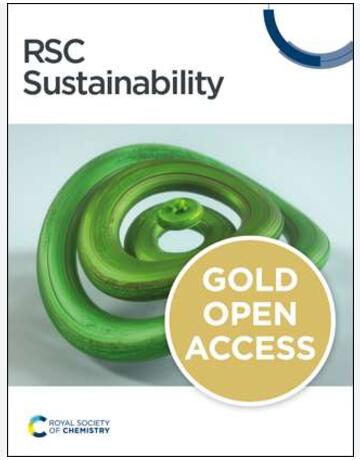巴西建筑内外凉爽屋顶和绿色屋顶的功效
IF 3.3
3区 环境科学与生态学
Q2 ENVIRONMENTAL SCIENCES
引用次数: 0
摘要
有几项研究对绿色屋顶和凉爽屋顶的热性能进行了评估。然而,很少有研究对巴西的建筑和气候进行全面评估,同时考虑到室内和室外环境。考虑到巴西的三个城市,本研究旨在评估绿色凉爽屋顶与传统纤维水泥屋顶在典型多户住宅建筑中的性能比较。通过计算机模拟对能耗、热舒适度和室外表面温度进行了评估。结果显示,凉爽屋顶在气候较温暖的城市(如 Cfa 和 Aw)表现更佳,与传统屋顶相比,最多可减少 24.8% 的耗电量。绿色屋顶更适合气候寒冷的城市(如 Cfb),可节能 28.2%。在所有气候条件下,绿色屋顶提供的热舒适时间比例最高。与传统屋顶相比,凉爽屋顶和绿色屋顶每小时可使屋顶外表面温度分别降低 16.5 ℃ 和 28.4 ℃。这项研究进一步证明,每个城市在这两种屋顶类型之间的选择取决于用于比较的参数。根据应用于巴西建筑物和代表性气候的相关信息,这项工作为巴西的城市规划政策和建筑法规提供了建议。本文章由计算机程序翻译,如有差异,请以英文原文为准。
Effectiveness of Cool and Green Roofs Inside and Outside Buildings in the Brazilian Context
Several studies have assessed the thermal performance of green and cool roofs. However, few have comprehensively addressed Brazilian buildings and climates, considering indoor and outdoor environments. Considering three Brazilian cities, this study aims to assess the performance of green and cool roofs compared with traditional fibre cement roofs in a typical multifamily residential building. Energy consumption, thermal comfort, and outside surface temperature were assessed using computer simulation. The results show that the cool roofs performed better in cities with warmer climates (e.g., Cfa and Aw), reducing electricity consumption by up to 24.8% compared with traditional roofs. Green roofs are better suited for colder climates (e.g., Cfb), with up to 28.2% energy savings. Green roofs provided the highest percentage of thermal comfort hours in all climates. Cool and green roofs provided hourly reductions in outside roof surface temperature of up to 16.5 °C and 28.4 °C, respectively, compared with the traditional roof. This work reinforces that the choice between these two roof types for each city depends on the parameter used for comparison. Based on the relevant information applied to Brazilian buildings and representative climates presented, this work provided recommendations for urban planning policies and building regulations in Brazil.
求助全文
通过发布文献求助,成功后即可免费获取论文全文。
去求助
来源期刊

Sustainability
ENVIRONMENTAL SCIENCES-ENVIRONMENTAL SCIENCES
CiteScore
6.80
自引率
20.50%
发文量
14120
审稿时长
17.72 days
期刊介绍:
Sustainability (ISSN 2071-1050) is an international and cross-disciplinary scholarly, open access journal of environmental, cultural, economic and social sustainability of human beings, which provides an advanced forum for studies related to sustainability and sustainable development. It publishes reviews, regular research papers, communications and short notes, and there is no restriction on the length of the papers. Our aim is to encourage scientists to publish their experimental and theoretical research relating to natural sciences, social sciences and humanities in as much detail as possible in order to promote scientific predictions and impact assessments of global change and development. Full experimental and methodical details must be provided so that the results can be reproduced.
 求助内容:
求助内容: 应助结果提醒方式:
应助结果提醒方式:


